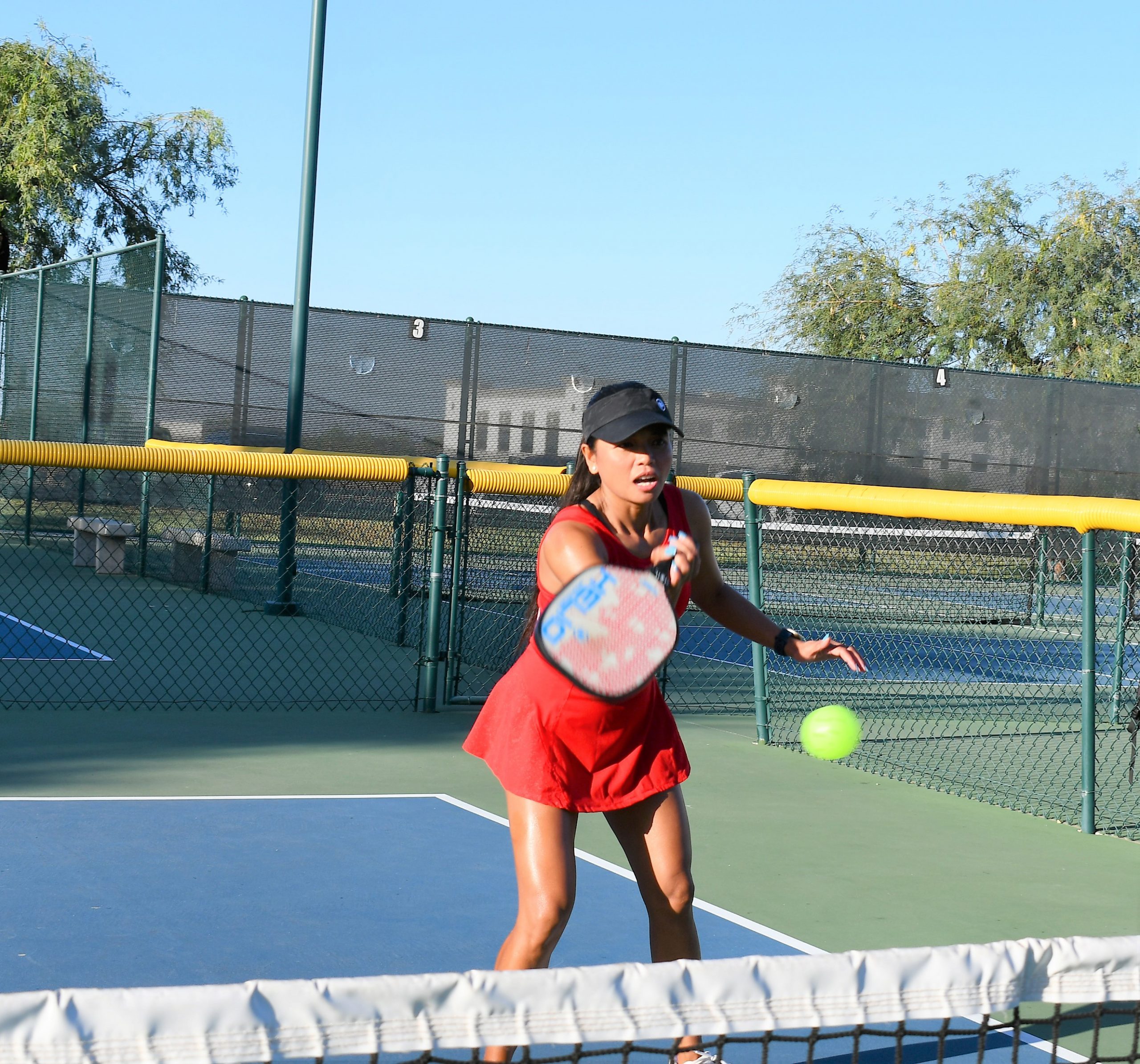Many point are won at the no-volley line, often with a punch volley aimed at your opponent’s feet or into an open area on the court. We’re often warned hit this shot only when you can strike the ball at or above your waist (approximately the same height of the top of the net, 34” to 36”) or you will likely hit the ball into the net. Even when the ball is above the net, you have to be careful not to strike the ball with too much pace or you could hit the ball out of bounds, over your opponent’s baseline. A properly executed roll volley can allow you to attack balls that are a bit below the net and also help you to hit fewer volleys over the baseline – because you hit this shot with topspin!
Because of the topspin, this shot curves upward and then drops faster onto the court in an arc, than a punch volley. The initial upward trajectory is what allows you to make contact with the ball below the net and the fact the ball drops faster explains why you are less likely to hit this shot out of bounds beyond your opponents’ baseline. Sounds great, right? The bad news is, this shot has a fairly high degree of difficulty. This challenge can, however, be overcome with proper technique and a good bit of practice. Here’s a quick overview of the technique you will need to master to offensively hit roll volleys.
Preparing for this shot begins with being at the no-volley line in the “ready position.” Assuming your opponent has just hit a soft shot or third shot drop in your direction, widen your stance, bend your knees to assume more of a squat position, and lower your paddle as the ball comes over the net, making certain your paddle is well below the level of the ball. Assuming you’re going to hit your roll volley from your forehand side, be sure you’re holding the paddle with a continental grip. The swing motion you use for this shot begins at 4 or 5 o’clock, moving upward and slightly over to 12 or 11 o’clock. Some follow through is fine, but two much could cause the ball trajectory to go far to the right, so try to conclude your swing at around 11 o’clock, allowing you to “brush” the back of the ball and put spin on the ball, which creates the looping movement of the ball. The backhand version of this swing begins at 7 to 8 o’clock and stops around noon to 1 o’clock.
Keep your wrist and arm loose as you prepare to make this shot so you can add a bit of roll and snap at the end of your swing motion. This will add to the top spin on the ball, causing it to arc more severely and bounce higher when it hits the ground.
The preparation and mechanics of this shot can also be applied when you can’t quite reach to volley the ball and instead wait for the ball to bounce. This is a terrific way to quickly and unexpectedly make an offensive shot while having an extended rally. To maximize the surprise of this shot, prepare for this shot in much the same way you would for making dink shot.
This same shot can also be used when your opponent is toward the back of their court and you want to keep them back. Hit from your no-volley line, the roll volley can be hit at their feet and with when the topspin causes the ball to “jump” higher than expected, makes your shot particularly likely to produce an easy to kill, “pop-up” return.





